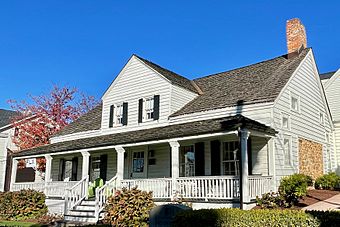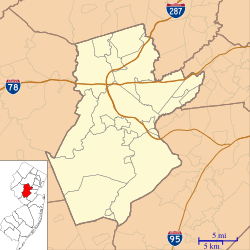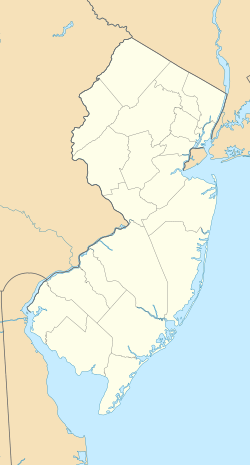John Parker Tavern facts for kids
|
John Parker Tavern
|
|
 |
|
| Location | 2 Morristown Road, Bernardsville, New Jersey |
|---|---|
| Area | 0.5 acres (0.20 ha) |
| NRHP reference No. | 78001796 |
Quick facts for kids Significant dates |
|
| Added to NRHP | December 14, 1978 |
The John Parker Tavern is a historic building in Bernardsville, New Jersey. You can find it at 2 Morristown Road, which is also U.S. Route 202. This old building was once called the Vealtown Tavern. It was a very important spot during the American Revolutionary War. Many soldiers from the Continental Army often visited it.
The tavern was added to the National Register of Historic Places on December 14, 1978. It earned this special recognition because of its role in local business, military history, and the overall story of the area.
The Tavern's Story
We don't know the exact year the John Parker Tavern was built. But we do know it was standing before the American Revolutionary War began. Captain John Parker (1747–1781) owned the tavern until he passed away.
During the war, American General Anthony Wayne was a frequent visitor. He would often stay at the tavern when he was in the area. Another person who visited, known as Dr. Byram, was actually a British spy named Aaron Wilde. He was caught spying and his activities were stopped.
The building continued to operate as a tavern until 1840. Then, it was sold to Roderick Alexander Kitchell. He changed it into a private home for his family. In 1903, the building found a new purpose and became the Bernardsville Public Library. Later, in 1999, it was sold again for business use.
What the Tavern Looks Like
The John Parker Tavern is a building that stands one and a half stories tall. It has a gable roof, which means the roof slopes down on two sides, forming a triangle at the ends. There's also a long porch, called a portico, that runs along the front of the building.
Over the years, the tavern has been changed a few times. In 1903, a one-story addition was built onto the back of the building. Then, in 1969, a two-story addition was added. These changes helped the building adapt to its different uses over time.




